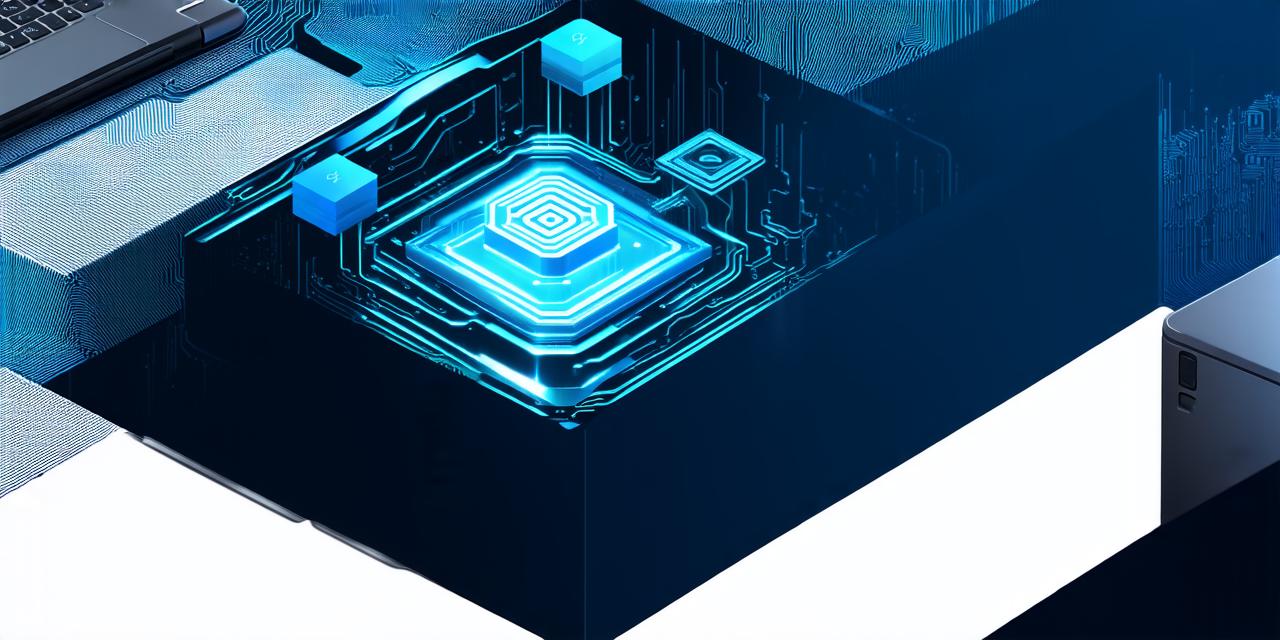Blockchain is a decentralized, distributed ledger that allows for secure and transparent transactions without the need for intermediaries. One of the key concepts in blockchain technology is the block, which is the basic unit of data that is stored on the network.
Understanding Blocks in Blockchain
A block in blockchain refers to the grouping of transactions into a single data structure that can be verified and added to the chain of blocks on the network. Each block contains several pieces of information, including:
- Transaction Data
- Merkle Root
- Time Stamp
- Nonce
- Block Hash
2. Merkle Root
The Merkle root is a cryptographic hash function that is used to create a digest of all the transactions in the block. This digest is then included in the header of the block and serves as proof that all the transactions have been verified by the network participants.
3. Time Stamp
The time stamp is a timestamp that indicates when the block was created. This timestamp is added to the header of the block and serves as proof that the block was created at a specific point in time. The timestamp also allows for the creation of a chronological sequence of blocks on the network, which can be useful for auditing purposes.
4. Nonce
The nonce is a random number that is used to prevent double-spending in the blockchain network. Each block contains a unique nonce value, which is added to the header of the block and serves as proof that the transaction data has not been tampered with. The nonce also allows for efficient synchronization of the network participants, which is essential for ensuring that each participant has access to the most up-to-date information on the network.
5. Block Hash
The block hash is a cryptographic hash function that combines all the data in the block header and creates a unique identifier for the block. This identifier is then added to the header of the block and serves as proof that the transaction data has been verified by the network participants. The block hash also allows for efficient storage of large amounts of data, as it can be used to verify the integrity of a block without having to include every transaction in the chain.
The Importance of Blocks in Blockchain
Blocks are an essential component of the blockchain network, as they allow for secure and transparent transactions without the need for intermediaries. Each block contains all the necessary data to verify the transactions that it contains, which makes it possible for the network participants to trust the integrity of the data.
Blocks also serve as a chain of evidence that can be used to trace the history of transactions on the network, which is useful for auditing purposes. In addition to their role in verifying transactions, blocks are also important for maintaining the security and stability of the blockchain network. The nonce value in each block serves as a mechanism for preventing double-spending, while the Merkle root allows for efficient storage of large amounts of data.
Case Studies and Personal Experiences
There are many real-world examples of how blocks work in practice. One popular example is Bitcoin, which is a decentralized digital currency that uses blockchain technology to record transactions. Each Bitcoin transaction is recorded in a block, which is verified by the network participants using complex mathematical algorithms. Once a block is verified, it is added to the chain of blocks on the Bitcoin network, creating a permanent and transparent record of all transactions.
Another example is Ethereum, which is a decentralized platform that allows developers to create smart contracts and other applications using blockchain technology. Each Ethereum transaction is recorded in a block, which is verified by the network participants using complex mathematical algorithms. Once a block is verified, it is added to the chain of blocks on the Ethereum network, creating a permanent and transparent record of all transactions.
Comparing Blocks to Other Data Structures
Blocks are similar to other data structures in that they allow for the grouping of related data into a single structure. However, there are several key differences between blocks and other data structures.

- Firstly, blocks in blockchain technology are designed to be immutable, which means that once they are created, they cannot be altered or deleted. This is achieved through the use of cryptographic hash functions, such as the Merkle root and the block hash, which ensure the integrity of the data and prevent it from being tampered with.
- Secondly, blocks in blockchain technology are designed to be transparent and auditable, which means that anyone can verify the transactions recorded in a block by checking the chain of blocks on the network. This is achieved through the use of consensus algorithms, such as proof-of-work or proof-of-stake, which ensure that all network participants agree on the validity of the data and prevent fraudulent activities.
- Finally, blocks in blockchain technology are designed to be scalable, which means that they can accommodate a large number of transactions without compromising their performance. This is achieved through the use of sharding or sidechains, which allow for the distribution of the network load across multiple nodes and improve the overall throughput of the system.
FAQs
Q: What is the purpose of a block in blockchain?
A: The purpose of a block in blockchain is to group related data into a single structure that can be verified and added to the chain of blocks on the network.
Q: How do blocks ensure the integrity of the data recorded in them?
A: Blocks in blockchain use cryptographic hash functions, such as the Merkle root and the block hash, to ensure the integrity of the data and prevent it from being tampered with.
Q: What is the difference between a block in blockchain and other data structures?
A: Blocks in blockchain are designed to be immutable, transparent, auditable, and scalable, while other data structures may not have these properties.
Summary
In conclusion, blocks are an essential component of the blockchain network, as they allow for secure and transparent transactions without the need for intermediaries. Each block contains all the necessary data to verify the transactions that it contains, which makes it possible for the network participants to trust the integrity of the data. Blocks also serve as a chain of evidence that can be used to trace the history of transactions on the network, which is useful for auditing purposes.
By understanding what is in a block in blockchain, developers and other stakeholders can better appreciate the power and potential of this innovative technology.
